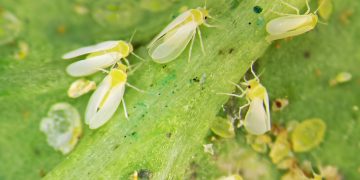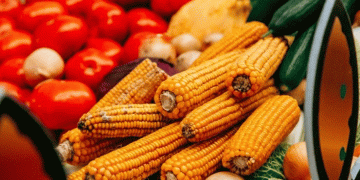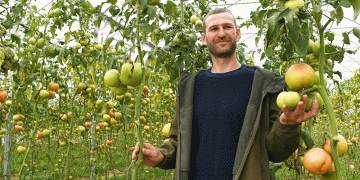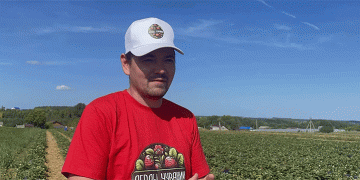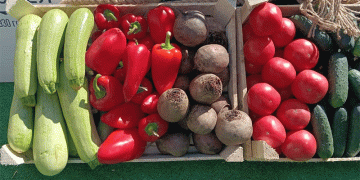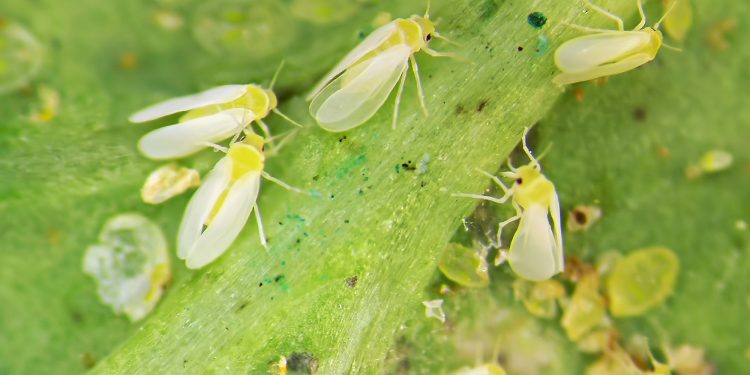#PestControl #Agriculture #CropProduction #IntegratedPestManagement #WhiteflyInfestation
Whiteflies are a common pest that can cause significant damage to crops. Trialeurodes vaporariorum, also known as the greenhouse whitefly, is a particularly troublesome species that has been causing widespread damage in recent years. In this article, we will explore the development and consequences of the invasion of Trialeurodes vaporariorum, and what can be done to mitigate its impact.
Development:
Trialeurodes vaporariorum is a small insect that feeds on the sap of plants, causing them to wilt and eventually die. This species of whitefly is native to Europe, but it has since spread to other parts of the world, including North America, South America, Asia, and Africa. The insect is particularly problematic in greenhouse environments, where it can reproduce rapidly and spread quickly. The whitefly is capable of producing up to 400 eggs in its lifetime, which hatch within a week, making it difficult to control.
Consequences:
The impact of Trialeurodes vaporariorum on crops can be devastating. Infestations can lead to reduced yields, stunted growth, and even death of plants. In addition, whiteflies are capable of transmitting plant viruses, which can cause even more damage. The economic impact of this pest is significant, as it can lead to crop losses and increased production costs for farmers.
Mitigation:
Controlling Trialeurodes vaporariorum requires a multi-faceted approach. Integrated Pest Management (IPM) strategies that combine physical, cultural, and chemical control methods can be effective in reducing the impact of the pest. This includes introducing natural predators such as parasitic wasps and fungi, implementing cultural practices such as crop rotation, and using insecticides as a last resort.
The invasion of Trialeurodes vaporariorum is a growing threat to global agriculture. Farmers and researchers must work together to develop and implement effective strategies for managing this pest to ensure the sustainability of crop production.
